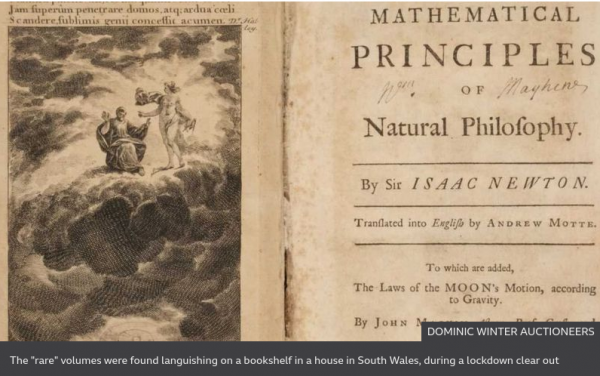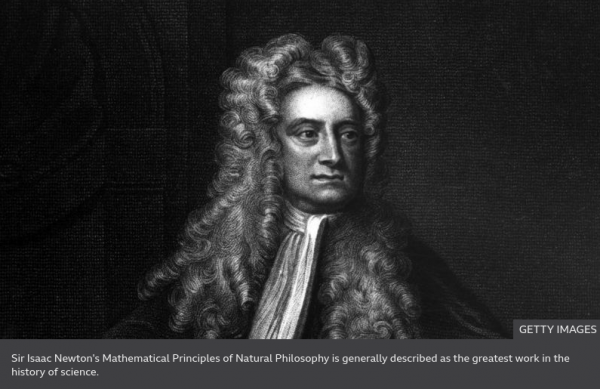-
Posts
20,851 -
Joined
-
Last visited
-
Days Won
49
Everything posted by CaaC (John)
-
Your Cats are doing well Phill and thrashing the magpies and its only half-time, looking good for the Grand Final either against the Tigers or Port Adelaide, it would be nice for you if the GF was Geelong v Richmond, I know you just love Richmond.
-
- 1,657 replies
-
- space exploration
- astronomy
-
(and 1 more)
Tagged with:
-
That's me and the wife had our yearly flu jab yesterday and as per normal it does give me mild symptoms of the flu but man I feel like death warmed up, can't eat, headache the lot, I have just been lying on the sofa sleeping on and off, I know I read that some people who have had the COVID bug have said it's just like having the flu, fuck that, just had my first coffee and that has seemed to help.
-
-
Tasmanian devils roam mainland Australia for the first time in 3,000 years VIEW 4 IMAGES Conservationists have released Tasmanian devils into the wild of mainland Australia, where they went extinct about 3,000 years ago Aussie Ark The Tasmanian devil is so-called because it’s only found in the wild on the island of Tasmania. But now, conservationists have reintroduced a population to mainland Australia for the first time in thousands of years. About the size of a small dog, these carnivorous marsupials once roamed all of Australia, but are believed to have gone extinct everywhere but Tasmania around 3,000 years ago. Dingoes are often blamed, since they would have competed for food and probably won, due to their larger size. The devils found solace in Tasmania, where dingoes never arrived, but in recent years they’ve faced new threats. Devil Facial Tumor Disease (DFTD) is a deadly and mysteriously contagious form of cancer that has killed so many of the animals that they’re now considered endangered, with just 25,000 estimated to remain in the wild. Now their story comes full circle, as they move back to the mainland to escape an existential threat. On September 10, conservationists from Aussie Ark, WildArk and Global Wildlife Conservation released 11 Tasmanian devils into a 1,000-acre wildlife sanctuary in Barrington Tops, New South Wales, about 200 km north of Sydney. The sanctuary is designed to protect the animals from dangers like disease, fire, cars, and feral pests like cats and foxes. These devils were born and raised as part of Aussie Ark’s breeding program, which has seen over 390 devils born in the past decade. The individuals were selected for rewilding based on their suitability to breed without any inbreeding. This release follows an earlier assisted trial release of 15 devils, meaning a total of 26 Tasmanian devils now roam the Australian mainland once again. And that’s just the beginning. Two more reintroductions are planned for the coming years, with 20 more animals to be released in 2021 and another 20 the year after. To ensure the population is staying healthy and safe, the devils will be monitored using camera traps, tracking collars, microchips and regular surveys. The program isn’t just about protecting the devils themselves – Aussie Ark considers the devils as one of seven cornerstone species crucial to restoring Australian ecosystems. The others – Eastern quolls, Brush-tail rock wallabies, Rufous bettong, long-nosed potoroo, parma wallabies and southern brown bandicoots – are expected to be released into the wild sanctuary in future. “Not only is this the reintroduction of one of Australia’s beloved animals, but of an animal that will engineer the entire environment around it, restoring and rebalancing our forest ecology after centuries of devastation from introduced foxes and cats and other invasive predators,” says Tim Faulkner, president of Aussie Ark. “Because of this reintroduction and all of the hard work leading up to it, someday we will see Tasmanian devils living throughout the great eastern forests as they did 3,000 years ago.” A video describing the release program can be seen below. #DevilComeback Featuring Chris Hemsworth & Elsa Pataky https://newatlas.com/environment/tasmanian-devils-release-mainland-australia/
-
Hubble Space Telescope captures stunning image of a galaxy 60 million light-years away By: Bulbul Dhawan |October 5, 2020, 6:45 PM The Hubble was deployed and launched into space a whopping three decades ago in 1990, in the space shuttle Discovery. The image was observed by Adam Riess, who is a Nobel Prize winner in Physics. (Image: ESA/Hubble & NASA, A. Riess et al.; acknowledgement: Mahdi Zamani) Hubble Telescope: Hubble captures stunning image of the spiral galaxy! The Hubble Telescope, operated by US’ National Aeronautics and Space Administration (NASA) and the European Space Agency (ESA), has captured a beautiful image of the spiral galaxy NGC 5643, NASA and ESA said in a joint statement. The galaxy is in the Lupus constellation or The Wolf. However, capturing the image was no cakewalk, the space agencies have clarified, adding that looking that good, even for a galaxy, is not as easy as it may seem. How did the Hubble capture the image? According to the joint statement, it required a total of nine hours of exposure, along with 30 different exposures, and the clarity and high resolution provided by Hubble. Only then was the detailed image of the beautiful galaxy captured. NGC 5643 explained The spiral galaxy called NGC 5643 is located at a distance of 60 million light-years away from our planet. It has also been the host of a recent event of supernova, which is not visible in the image that Hubble has captured. The supernova that the galaxy experienced, labelled 2017cbv, was a specific type of event during which a lot of mass is stolen by a white dwarf from a companion star. The high amount of mass causes the white dwarf to become unstable and ultimately explode. A significant amount of energy is expelled during this explosion, as a result of which a part of the galaxy is lit up. The image was observed by Adam Riess, who is a Nobel Prize winner in Physics. Hubble: Its journey The Hubble was deployed and launched into space a whopping three decades ago in 1990, in the space shuttle Discovery. The Hubble, as against telescopes situated on the planet, is not hindered by the Earth’s atmospheric conditions like rain, clouds and pollution, and has a clear view of other celestial objects. Named after revolutionary astronomer Edwin Hubble, the space telescope has been used by scientists for the observation of various distant stars and galaxies that were yet to be seen. It also helped in observation of planets in our own solar system as well. Over the years, the capabilities of Hubble have been improving as the space agencies have placed cutting-edge components on the telescope in five astronaut servicing missions ever since it was deployed. Hubble can capture images from ultraviolet to visible, as can be seen by our eyes, and to near-infrared, making its range of observations and capturing vast and diverse. This has made the telescope especially useful in capturing stunning images of various astronomical objects, ultimately changing the way the universe has been viewed by people. https://www.financialexpress.com/lifestyle/science/hubble-space-telescope-captures-stunning-image-of-galaxy-60-million-light-years-away-check-here/2098607/
- 1,657 replies
-
- space exploration
- astronomy
-
(and 1 more)
Tagged with:
-
Shit, I should have read the whole report first before posting as I have already mentioned the mystery man above that post... it's my glasses need cleaning.
-
Celtic 'agree deal' for €14m AC Milan defender who shone at 2018 World Cup and compares himself to Alvaro Recoba The Parkhead club were linked with a move for a Juventus defender over the weekend. (THE SCOTSMAN)
-
Adelaide United is delighted to announce the signing of the attacker, Domenic Costanzo, on a scholarship contract ahead of the upcoming A-League 2020/21 season. Costanzo has been a revelation for local National Premier League (NPL) side, Croydon Kings, this season, scoring a league-leading 14 goals in 18 matches under his father’s tutelage – Reds legend, Angelo Costanzo, who is the Kings’ current Head Coach. The 18-year-old Croydon product had previously been in the Reds’ youth team, playing in the Foxtel Y-League 2018/19 season and later featuring 13 times and scoring two goals in last year’s NPL. Costanzo is the first father-son combination in the Club’s history after Angelo accumulated 92 appearances between 2005 and 2009. (Adelaide United)
-
It's nice to be wanted as grandparents, our daughter just texts me for a loan of some dosh until tomorrow as she has just had a phone call from wee Kaiden's school that he had broken one of his toys he dotes over that we got him for his birthday he bought into school for 'Show us your presents day', and Kaiden was upset, not a problem and told our daughter that was another one ordered and on its way and we don't want the dosh back as the treat was on us.
-
-

Premier League Confirmed Transfers
CaaC (John) replied to CaaC (John)'s topic in Premier League - English Football Forum
The summer 2020 transfer window is open from 27 July to 23:00 BST on 5 October. *A domestic-only window, during which Premier League clubs can trade only with those in the EFL or below, will run from 23:01 BST on 5 October to 17:00 BST on 16 October. The deals, loan or permanent, announced by clubs below may still be subject to international clearance and/or administrative details before they can be confirmed. * The domestic-only window is now closed. All transfer fees are undisclosed unless otherwise stated. IN - OUT Summer Transfer Window 2020 Transfer Deadline Day - all the deals Edit: Last Updated 22 October 2020 26 October 2020 -
You can tell winter is creeping slowly, pissing down outside and a cool 9c, went up the shops and it was long trousers, boots, heavy coat and balaclava, looks like the summer shorts, tops and trainers are going into hibernation soon.
-
New topographic map of Jezero Crater – Mars 2020’s future home On 18 February 2021, NASA’s Mars 2020 spacecraft will touch down on the surface of Mars. The mission, which launched in July of this year and is carrying a rover named Perseverance on board, will seek signs of ancient life on the Red Planet and collect samples of rock and soil so that these can later be returned to Earth by ESA and NASA. Mars 2020 will land in Jezero crater, the intriguing feature shown in this new topographic map from ESA’s Mars Express. The landing zone for the mission is highlighted by the black ellipse. This map was created using observations from Mars Express’ High-Resolution Stereo Camera (HRSC), and shows the topography of the landscape (as indicated by the coloured bar to the right of the frame, and the associated elevation graph to the bottom). Regions of higher elevation are shown in reds and oranges, while lower dips and depressions are highlighted in blues and greens. Jezero is an impact crater of roughly 45 kilometres in diameter and is thought to have once hosted an ancient lake. Evidence of this can be seen in the features scattered across the crater basin: deltas, inlet valleys (marked by solid black lines that wind into the crater to the upper left), channels, and a smoother topography along the northern crater rim (where the material was swept up by flowing water) than the southern (where these materials were later deposited). Jezero also hosts a large outlet channel, as seen to the right of the frame (east) in shades of pale blue, and marked by a solid black line. In order to carve such a substantial valley, the crater must have once been replenished by a relatively constant supply of water. This is an exciting prospect in our hunt for life on Mars, as the carbonates and clay minerals thought to still be present in Jezero – which formed in the presence of ancient water – may have locked up signatures of past life. Mars 2020 will explore the history and chemistry of Jezero to characterise such ancient lakeshore environments in detail – an essential step towards better understanding what early Mars was really like. One of Mars 2020’s key objectives is to collect samples for a future return to Earth. This endeavour will require cooperative robotic missions from both NASA and ESA. Current plans for ESA-NASA Mars Sample Return rely on ESA’s small Sample Fetch Rover collecting the samples cached by Mars 2020’s Perseverance rover before these are launched into Mars orbit by NASA. A further ESA mission, the Earth Return Orbiter, will then swoop in to collect the basketball-sized container of rock and soil samples and return these safely to Earth. This map comprises observations gathered during Mars Express orbits 5252 and 5270, and covers an area of the Martian surface located at approximately 18° N, 77° E. http://www.esa.int/ESA_Multimedia/Images/2020/09/New_topographic_map_of_Jezero_Crater_Mars_2020_s_future_home
-
I love that and I reckon I could live in it if I had a choice but I don't think the wife would like the idea.
-
What wobbling rocks can tell us about nuclear safety Precariously balanced rocks, or PBRs, record a history of things that haven’t happened We’ve all seen them; we’ve even taken pictures of ourselves pretending to hold them up or to push them over. These are the precariously balanced rocks on a hill or a coastal cliff. It’s as if the gentlest nudge would send them tumbling. In truth, the disturbance needed to unsettle the blocks is quite significant, and that got husband and wife geologists Drs Dylan and Anna Rood wondering about how these great stones could be used to decipher earthquake history Think about it: if a precariously balanced rock has held its position for 10,000 years without tipping over, it means the land around the stone hasn’t experienced shaking above a certain level in all that time. “The turn of phrase we’re trying to coin is that these precariously balanced rocks, or PBRs, are an ‘inverse seismometer’,” explains Anna. “A normal seismometer records an event that has happened, whereas our PBR is still standing there, and so it records an earthquake that hasn’t happened. Specifically, a large earthquake,” the Imperial College London, UK, researcher tells BBC News. FULL REPORT & More Photos
-
Hubble views a supernova in a spiral galaxy An exploding star has been spotted by the Hubble Space Telescope in a galaxy 70 million lightyears away. The Hubble Space Telescope has observed a supernova in a spiral galaxy 70 million lightyears away. The galaxy, known as NGC 2525, is in the Southern Hemisphere constellation Puppis, and the bright supernova can be seen as a blue flash on the left side of this image. Supernovae are stellar explosions caused when stars over 1.4 times the mass of our Sun begin to use up their fuel towards the end of their life. The star collapses in a matter of seconds and explodes as a supernova (for more info, read our guide What is a supernova?) The supernova pictured here is known as SN2018gv and was first spotted in January 2018. Supernovae like these can be used to measure distances in space, enabling astronomers to calculate the expansion rate of the Universe. More Hubble images: Hubble spies a spiral within a spiral galaxy Hubble spies a ghostly galactic collision Hubble images the death of a Sun-like star Image stats Release date 1 October 2020 Observatory Hubble Space Telescope Image credit ESA/Hubble & NASA, A. Riess and the SH0ES team / Acknowledgment: Mahdi Zamani https://www.skyatnightmagazine.com/space-science/hubble-views-supernova-in-spiral-galaxy/
- 1,657 replies
-
- space exploration
- astronomy
-
(and 1 more)
Tagged with:
-
Mechanic: Resurrection with Statham, not bad as I watched the ist Mechanic and enjoyed it and this was the same, 8.0/10








.thumb.png.c0bc55c654289e6af1e0a9b205563fb2.png)
.thumb.png.43db506561f59211915fffe5d0f37a96.png)
.thumb.png.c0f034566c5b11fc51277302298b2aaf.png)
.png.72a83fdeec5b8b1a62a919f4c6485781.png)










.png.258f1e24aa1566c589c7ac7b0ada8f7e.png)



